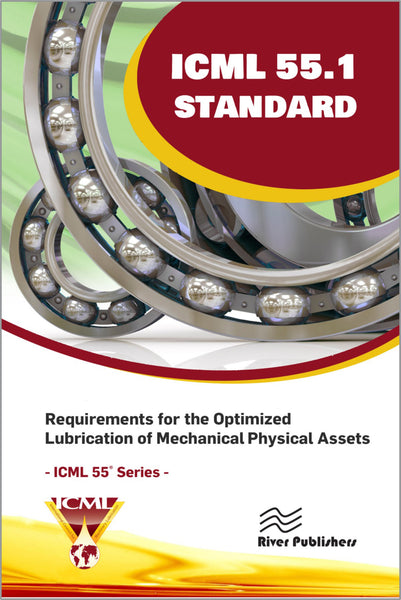Description
Requirements for the Optimized Lubrication of Mechanical Physical Assets
With over 40 subject matter experts contributing their time and energy across several years, the ICML 55.1 requirements document represents a consensus of the worldwide machine lubrication community pertaining to well-established best management practices.
It identifies and defines the requirements for what should be done rather than explaining how to do it, thus allowing for much customization to each organization’s needs.
The adoption of ICML 55 requirements helps companies efficiently manage their physical lubrication and asset policies, strategies, and plans. The application of a lubrication management system for mechanical assets assures that these objectives can be achieved consistently and substantially within the physical asset management plan over time.
Who Can Benefit from ICML 55.1?
- Those who desire to improve the lubrication management practices of their lubricated mechanical assets pursuant to the realization of optimal organizational value as described by ISO 55001 and its amendments and subparts.
- Those involved in the establishment, implementation, maintenance, and improvement of a lubrication management system as a part of their physical asset management system as described by ISO 55001.
- Those involved in the planning, design, implementation, and review of lubrication management activities. These include local resources or outside service providers or advisors that provide contractual onsite support and/or services.
What Kinds of Physical Assets are Covered by ICML 55.1?
- Rotating and reciprocating machines, powertrains, and hydraulic systems as well as their lubricated subcomponents
- Assets with lubricants that reduce friction, wear, corrosion, heat generation and energy consumption and/or to facilitate the transfer of mechanical energy for accomplishing work
- Finished products derived from API categories I-V, e.g., motor oils, hydraulic fluids, general lubricating or circulating oils, brake fluids, chain/wire rope lubricants, gear oils, food-grade lubricants, lubricating greases, etc.
- Non-machinery support assets, e.g., personnel, policies & procedures, storage facilities, and management
ICML 55.1 Fully Addresses Requirements in 12 Areas:
Skills - Job task, training, and competency
Machine - Machine lubrication and condition monitoring readiness
Lubricant - Lubricant system design and selection
Lubrication - Planned and corrective maintenance tasks
Tools - Lubrication support facilities and tools
Inspection - Machine and lubricant inspection
Lubricant Analysis - Condition monitoring and lubrication analysis
Troubleshooting - Fault/Failure troubleshooting and RCA
Waste - Lubricant waste handling and management
Energy - Energy conservation and environmental impact
Reclaim - Oil reclamation and system decontamination
Management - Program management and metrics
Author:
ICMLPublished:
2019Format:
PaperbackPages:
56Table Of Contents:
- Forward
- Disclosures
- Acknowledgments
- Editorial Board
- Contributors/Reviewers
- ICML Board of Directors
- Introduction
- Purpose
- Relationships with other standards
- Target users of this standard
- Benefits of this standard
- Application of ICML 55.1
- Integration with other management systems
- Scope
- Lubrication Lifecycle Activities
- Living Document
- Reference Publications
- Normative
- Informative
- Terms and Definitions
- Lubrication Management Objectives
- Lubrication Management Plan(s)
- Job Task Skills, Training and Competency
- Machine Lubrication and Condition Monitoring Readiness
- Machine Lubrication
- Condition Monitoring Readiness
- Lubrication System Design and Selection
- System Design
- Supplier Selection
- Planned and Corrective Maintenance Lubrication Tasks
- Health and Safety
- Planned Maintenance Task Elements
- Corrective Maintenance Task Elements
- Lubrication Support Facilities and Tools
- Lubricant and Lubrication Support Facilities and Infrastructure
- Tools, Instrumentation (Automation) and Consumables
- Machine Lubricant Inspection
- Condition Monitoring and Lubricant Analysis
- Fault Analysis
- Troubleshooting
- Root Cause Analysis
- Lubricant Waste Handling and Management
- Energy Conservation and Environmental Impact
- Energy Conservation
- Environmental Impact
- Oil Reclamation and System Decontamination
- Oil Reclamation
- System Decontamination
- Program Management and Metrics
- Structure, Authority, and Responsibility
- Management Outsourcing
- Program Documentation
- Information Management
- Communication, Participation, and Outsourcing
- Change Management
- Metrics
- Improving Actions
- Contingency Planning
- Additional Requirements
- Legal Requirements
- Audits
- Records
- Program Oversight and Management Review




